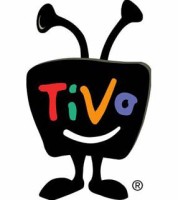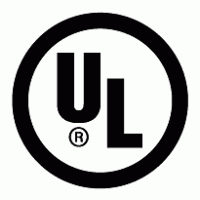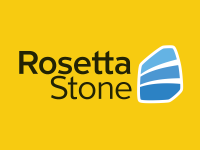Overview
For marketers developing eMarketing campaigns and those frustrated by the results of their initial efforts, the following article is the first in a series aimed at providing information on developing effective eMarketing processes, maximizing eMarketing channels and establishing realistic expectations.
Expectations of Real-time Results = Real-time Disappointments
With more than 1B global users, the Internet has emerged as a vital marketplace for businesses of all sizes, from Fortune 500 companies to mom-and-pop shops.
By 2012, they will be spend more than $40B a year on eMarketing [1] in order to create awareness amidst an already overcrowded medium (Google estimates that there are more than 200B web pages) and in turn drive leads and revenue.
Even though many industries will soon be investing more of their marketing budget online than any of the traditional methods, most are well short of developing a comprehensive and strategic approach to eMarketing: as of 2005 almost half of SMBs did not even have a website [2] .
The complexities of creating, managing and publishing online content and the wide array of channels by which it can be communicated, combined with the infancy of the eMarketing practice provide significant challenges and too few proven processes for marketers.
The potential benefits of eMarketing, such as its reach, cost and accountability, compounded by the anxiety of investing in new approaches and the pressures for a rapid return on that spend have resulted in unreasonably high expectations: real-time results.
While eMarketing poses numerous unique challenges, many of the rules of thumb of traditional marketing apply: it is still a process that requires effective communication, repetition and the time necessary to build relationship with consumers.
Successful marketers will avoid the temptation of expecting real-time results from eMarketing. Instead, they will educate themselves on emerging best practices, work with proven and established vendors, and leverage the accountability of the medium to, over time, accurately access and evolve their strategy and tactics.
eMarketing Tips
Since the Internet is a constantly evolving technology, eMarketing strategies and tactics must be flexible.
Regardless, there are a few principles that should serve as a foundation for any online marketing campaign.
Develop Your Brand – Through eMarketing you are most likely going to reach a significantly greater percentage of your target market than through other marketing mediums.
Unless you are promoting a global leader, you will need to educate that new audience on your brand.
With the proliferation of legitimate and questionable information and businesses on the web, users are inherently skeptical.
Therefore, it is not only important to consistently reinforce your brand, but ensure that how it is leveraged is credible: from the marketing channels you utilize to the online partners and vendors you engage.
Don’t Just Yell and Sell – One of the most common criticisms of online marketing is that in an attempt to “break through the noise,” marketers have resorted to yelling at consumers: “Buy Now!” “Don’t Miss Out!” “Act Fast.”
While the Internet is a cluttered medium, it also enables marketers to provide consumers with detailed and customized marketing.
If marketers can leverage these capabilities to build relationships with consumers, instead of just trying to sell them, customers will be more informed, reducing burdens on sales staffs, and it is more likely that they will become long-term sources of revenue.
Leverage Internet Benefits To Develop The Strongest Strategy and Effective Tactics – One of the greatest benefits of eMarketing is the depth of data it can provide on who you are marketing to, the performance of your marketing channels and how consumers are acting/reacting..
Successful marketers not only incorporate the information gleaned from this data into strategy and tactics, but are nimble enough, when appropriate, to enact these changes in real time.
Remember Traditional Rules of Thumb – The speed, cost and capabilities of eMarketing can be beneficial to any marketing campaign. Yet, this can be a double-edged sword if not properly executed: i.e. just because you can act quickly, does not mean you always should act quickly.
As with any form of marketing, standard rules of thumb apply for eMarketing. Timing, repetition, quality of marketing vendors, and a comprehensive approach are just as important in eMarketing as they are with traditional marketing.
Because it is an emerging practice that is frequently more affordable and flexible than its traditional counterparts, there is a tendency for marketers to “dabble” in eMarketing and evaluate the viability of the online marketplace from the resulting data.
Most marketers would not place an ad in a weekly newspaper for a few months and if there were not a significant impact on business determine that marketing is ineffective for their organization.
It is equally impractical to draw conclusion on eMarketing campaigns based on a short-time period through a singular channel.
eMarketing Channels
In order to successfully evaluate the most effective eMarketing channels for your campaign, it is necessary to understand their role and develop reasonable expectations for their impact.
Websites – Tend to be the anchor of most eMarketing campaigns. Businesses utilize their websites in various ways: from a basic-information source to a 24-hour salesperson/store.
Regardless of a website’s purpose, the reality is, there are more than 100M of them and 200B pages on the Internet.
An eMarketing campaign that does not extend beyond a mere website is the electronic equivalent of placing a needle in a haystack and assuming consumers will find it.
Pay Per Click Ads – Since users most commonly discover information on the web via search engines, many marketers employ pay per click (PPC) ads – ensuring that when words and phrases are entered into a search engine their ads will appear.
While many companies have seen benefits from PPCs, as part of a comprehensive eMarketing approach, 75% of marketers that employ them experience fraud [3] ; 80% of users never click on them [4] , 66% distrust them [5] and almost 1/3 are annoyed by them [6] .
Search Engine Optimization – A majority of website traffic comes from “organic” search engine results – those that are not pay per click ads.
There are vendors that specialize in identifying key words and phrases that relate to an organization’s website and attaining high-ranking search-engine results for them.
Fees for SEO can range from a few hundred dollars to mid=five figures.
Banner Ads/Portal Listings – A number of websites allow marketers to advertise on them or are designed for promotion of specific industries, i.e. portals.
Banner ads/portal listing can be an effective, albeit sometimes costly, tactic in attracting an audience that you already know is interested in your industry or a complimentary service/product.
Since they are essentially ads on websites, marketers must realize that with banner ads and portal listings they will face many of the same challenges mentioned above in the website section.
Direct eMailers – Are the electronic counterpart to traditional mailer campaigns. With their numerous benefits, direct eMailers are one of the fastest growing eMarketing channels: Jupiter Research reports that spending on email marketing will grow at a compound annual growth rate of 24%, reaching $6.1 billion in 2008.
Direct eMailers combine the most frequent online activity with proactive marketing that can be segmented, customized, updated in real time and tracked.
Across almost every age group emailing is the most common use of the Internet.
Unlike the other eMarketing channels that have been outlined, eMailers do not rely on users to find information. Instead, marketing collateral is delivered directly into email boxes of targets that can be defined by multiple parameters; age, sex, location, education, etc.
eMailers can be tracked so that marketers not only know what percentage of their targets read the emails, but how many take additional step, such as redeemed a special offer or clicked-through to a website.
With the numerous benefits of eMailers, along with the fact that their cost is significantly less than their traditional counterpart; only pennies per email, many organizations are viewing them alongside websites, as a must-have for their eMarketing campaigns.
[1] Forrester Research
[2] Yankee Group
[3] Outsell Report
[4] iProspect Search Engine User Behavior Study
[5] Emarketer
[6] Emarketer

















